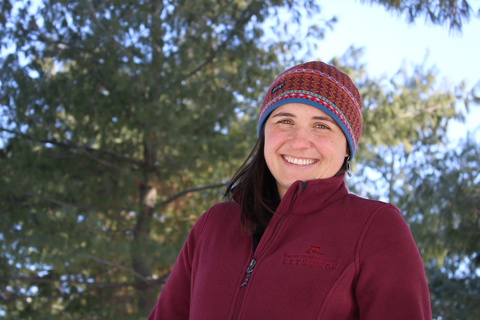Heidi Roop spent much of her career studying climate change in Antarctica, New Zealand and across the Arctic. Most recently, she led science communication at the Climate Impacts Group at the University of Washington. She now brings this research and communication expertise to the University of Minnesota, plugging into and building on a rich foundation of climate change work. Minnesota is expected to be a perfect fit for this self-proclaimed super-nerd of ice and lake sediments.
What is the goal of your work in Extension?
Science is critical for understanding the range of possible futures as we move into a climate-changed world, but how we respond requires an understanding of more than climate science. My overarching goal is to do research and communications work that supports people and nature thriving in a changing climate. This happens through collaboration, building capacity in communities, and by providing science and information. I want to build support for climate resilience and to advance climate-smart decision-making.
What is “climate-smart” decision-making?
It’s one thing to know the climate is changing; it’s another thing to do something about it. That’s where climate-smart decision-making comes in.
Say you’re making a decision about rebuilding a storm-damaged bridge. You can ask, “Am I going to build that bridge back exactly the way it was using information about, say, the past climate? Or am I going to leverage information that can tell me about the conditions that bridge will actually experience?” That would require considering climate science knowledge, which the University helps to generate.
What are your plans for sharing climate data?
The scientific community can say that our winters are warming faster than any other season. We can say that we expect our average winter minimum temperature to be almost 10 degrees Fahrenheit warmer by mid-century, but what do you do with that information?
The consequences of that for the thing you care about are very place-specific. Climate change projections that are at an appropriate scale — such as a census tract, watershed or community scale — can help government officials, resource managers and farmers make decisions that include climate change information.
The University of Minnesota has excellent climate modelers. We have a first generation of downscaled climate data (data from global models made more locally relevant) for a range of variables. These data are not yet easily accessible in a way that anyone can access without special software. I see the role of Extension as being a translator, distiller and provider of information that can help others make decisions within their context. We are working to make these data available to support people who are working on the landscape — to enable them to plan for today and tomorrow.
How do partnerships fit into your work?
The University and Extension are key players and partners in climate work, but climate change is a team sport. It requires that we bring together a range of diverse perspectives and expertise in order to really understand how best to prepare for climate change.
The Minnesota Climate Adaptation Partnership (MCAP) was started by faculty at the University of Minnesota over a decade ago. It is the only multi-sector statewide group working on climate adaptation, so it brings together University, public and private sectors, and tribal partners. My goal is to build on that momentum and that foundation.
You’ve conducted research in Antarctica. What’s it like there?
It’s a humbling place to be because it makes you realize how small you are. It’s hard to comprehend the vastness as well as the fragility of the continent due to climate change.
The scale of climate change and the fact that it will change places like Antarctica as well as our own backyard should motivate us all to act. Using science and making climate-smart decisions as individuals and communities is critical. You may not care about ice sheets, but you probably care about your backyard, or your job or the water you drink. If we don’t manage for climate change, all of those things that we care about are at risk.
How we experience climate change depends on
How well we prevent further warming + How well we prepare for the changes we set in motion
Climate resilience = Mitigation + Adaptation



